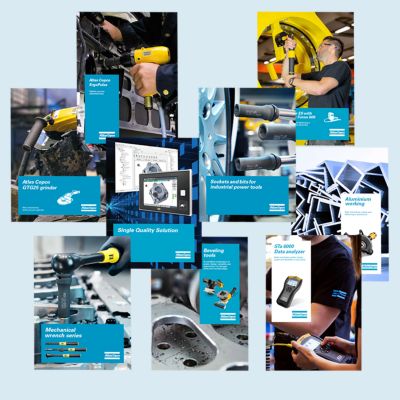Crucial to the digital world that we know today, semiconductor production equipment and chip manufacturers are tasked with the complicated and often detailed processes involved in producing the chips that allow our smartphones, TVs, medical devices, and military systems (among many other things) to run as they should.
For both the semiconductor equipment and the ever-important chip manufacturers, the ability to document, trace, and track the movement of their products down the assembly line and through the supply chain is a critical element to a successful process. Read on to discover why traceability matters in this cutting-edge industry!

Are operator mistakes inevitable or preventable?
How many times have you heard the expression, “We will make mistakes; we're only human?”
While this is an accurate statement, making mistakes during semiconductor production is extremely expensive and could have a huge impact on the production rate, especially considering that some of these chips take months to produce. We all know that the manufacturing process to transform silicon wafers into chips is almost 100% automated, but the assembly of the production equipment used by chip manufacturers to produce them typically is not.
Semiconductor manufacturer’s semicon production equipment currently requires thousands of screws that are placed by an operator (manual assembly process). Disregarding the purpose of the equipment (Polishing, Etching, Deposition, Inspection, etc.), the expectation is that each and every screw must be fastened properly to ensure the correct performance of the production equipment.
Sensitive processes like CMP machines could easily require more than 100 fasteners per polishing head. For quality control purposes or in case of any quality claim, questions similar to the following may arise:
- "How to check if every one of these screws were properly fastened?"
- "How to ensure that the operator is not missing or skipping any assembly positions?"
It’s quite obvious to see how these types of processes could greatly benefit from the implementation of a system or assembly solution that provides complete traceability. Several quality issues - such as floating or missing screws, crossed threads, and bit cam-outs - can be avoided using Smart tools that not only assure the quality of the tightening but also provide data analysis and full traceability.
Using Atlas Copco’s Tensor IxB integrated controller tools as an example, the assembly process could start with the operator scanning the unit's serial number, which automatically will select an assembly sequence. The assembly sequence will allow the operator not only to count the screws but only to switch between different programs if it’s required. The operator can feel confident that every single screw is properly assembled thanks to the visual feedback provided through the tool display. Finally, all tightening information will be reported and recorded on a database for quality purposes.

Complexity is faced not only during the production of semicon equipment but also when these machines are due for preventive maintenance.
For the production of the wafers that eventually become chips, the semiconductor industry relies on a series of extremely complex, interwoven processes that require numerous checkpoints and validation steps. The first part of the equation is to guarantee that these de machines were properly assembled so the performance of the equipment during production meets the expectations. The second part is related with keep the equipment up and running which requires (among other things) performing preventive maintenance according to the specs stated in the manual.
Unexpected downtime or failure of production equipment for any manufacturer in any industry can be catastrophic, but it can be especially damaging for those in the Semicon industry. How to perform preventive maintenance making sure that the operator follows each and every step of this process? How to record that the operator performed these tasks? And most importantly, how to verify that each screw was removed and re-assembled according to the specifications?
This is where the implementation of our comprehensive software solutions, such as Atlas Copco’s ToolsNet 8 and/or Avantguard, may be beneficial for both traceability purposes and preventative maintenance.
Let’s take again the chemical-mechanical planarization (CMP) polishing process as an example. In order to perform preventive maintenance (PM) on this equipment, the operator is required to follow multiple steps:
- Removing 100+ screws in a specific sequence
- Removing and replacing a few components
- Re-assembling the 100+ screws in a specific pattern
- Calibrating
- Testing
When this PM process is performed manually, it is not uncommon to hear technicians complain about injuries and muscular pain as a result of manual torque wrenches. This process is quite extensive, so it can take more than two hours due to the number of fasteners that need to be removed and reassembled, creating a low-productivity process that also creates extensive downtime on the line.
Imagine that Atlas Copco’s mobile tool cart is set up in line with all the equipment and accessories required to perform this with quality and high productivity instead of performing a manual PM. This type of station is not uncommon in the semicon industry and usually includes solutions like:
- Wireless tools
- Industrial PC for operator guidance and data collection purposes
- Other accessories for operator feedback purposes
The use of smart battery tools will prevent injuries to the operator. At the same time, the combination of the tool and the operator guidance solution (Avantguard) will guarantee the correct execution of this maintenance.
Finally, using ToolsNet 8 (a data management solution), users can record the values of every single tightening. This allows users to store this information and run reports for quality purposes whenever necessary.

Achieving Seamless Production with Atlas Copco
In semiconductor production, semiconductor manufacturers must sustain precise production quality. Are you ready to use advanced tools and solutions to remain productive, precise, and competitive? Contact the experts at Atlas Copco to discover the right tooling ensemble for your production.






